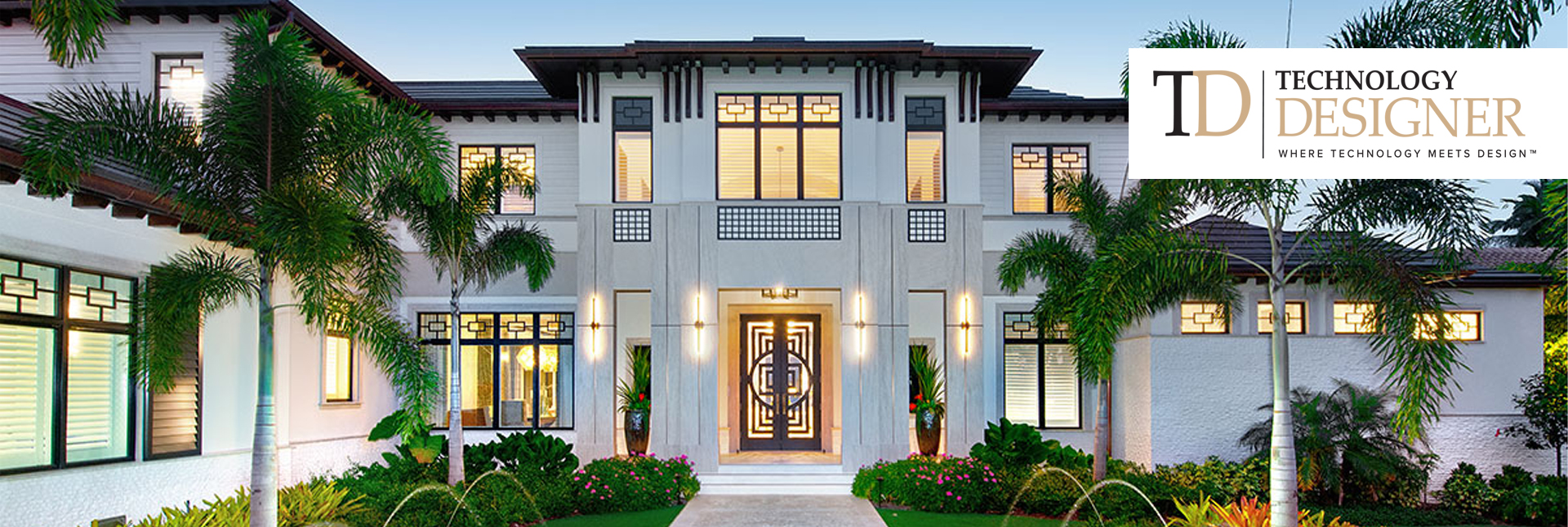
Technology Designer Magazine explores the world where technology meets design. Written by and for the design-build community, the magazine features unique team profiles and in-depth project case studies.
They recently featured Lynne Stambouly, Senior Lighting Design and CEO of Illuminated Design, in an in-depth piece about her career, struggles and achievements.
First appeared in the Summer issue of Technology Designer Magazine and is reprinted with permission
TECHNOLOGY PROFILE
Lighting and Learning
We recently had an in-depth conversation with Lynne Stambouly, whose lighting career has spanned over 35 years.
BY GEORGE MCCLURE
SINCE THE EARLY 1980s, LYNNE STAMBOULY has worked for lighting manufacturers, trained other lighting professionals around the country, owned her own lighting showroom and designed for some of the largest interior design firms in the United States. She is currently Senior Lighting Designer and CEO of Illuminated Design in Naples, Florida.
In addition, Lynne is past President of the Interior Design Society in Naples (IDS) and has been affiliated with the American Society of Interior Designers (ASID) for over 15 years. Currently she holds the position of Chairman for the Collier Building Industry Association (CBIA) Sand Dollar Award Committee, and is a founding member of the Advisory Counsel for the Interior Design School at Southwest Florida College.
“Now we have some unbelievable technology with flexible LED that we lay down on a substrate and we are able to actually put the stone right on top of it.” – Lynne Stambouly ILLUMINATED DESIGN
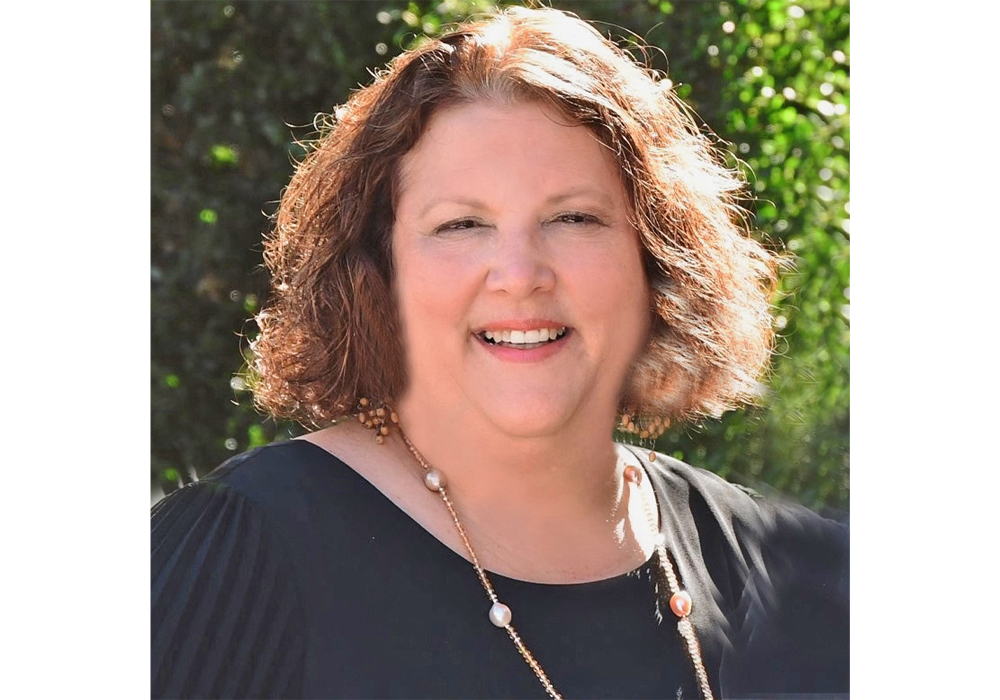
GEORGE: How did you get your start in the lighting industry?
LYNNE: I actually went to electrical school in the late eighties. The first guys I worked for, their dad started Union Number One in St. Louis, Missouri. So, for the first two years that I worked for them I went to electrical trade school. That experience to this day suits me well. If I’m on a job site with an electrician or an inspector, it helps to understand the craft from the ground up.
GEORGE: You can talk their language and anticipate potential issues when you’re designing a system.
LYNNE: Yes. Especially when it comes to retrofitting. We have to know what’s happening behind the infrastructure to add to it or make changes. You can’t just say, “Okay, I want a light here.” Because if I say, “It can be done,” and then the electrician comes in and it can’t be done, then what kind of expert am I?
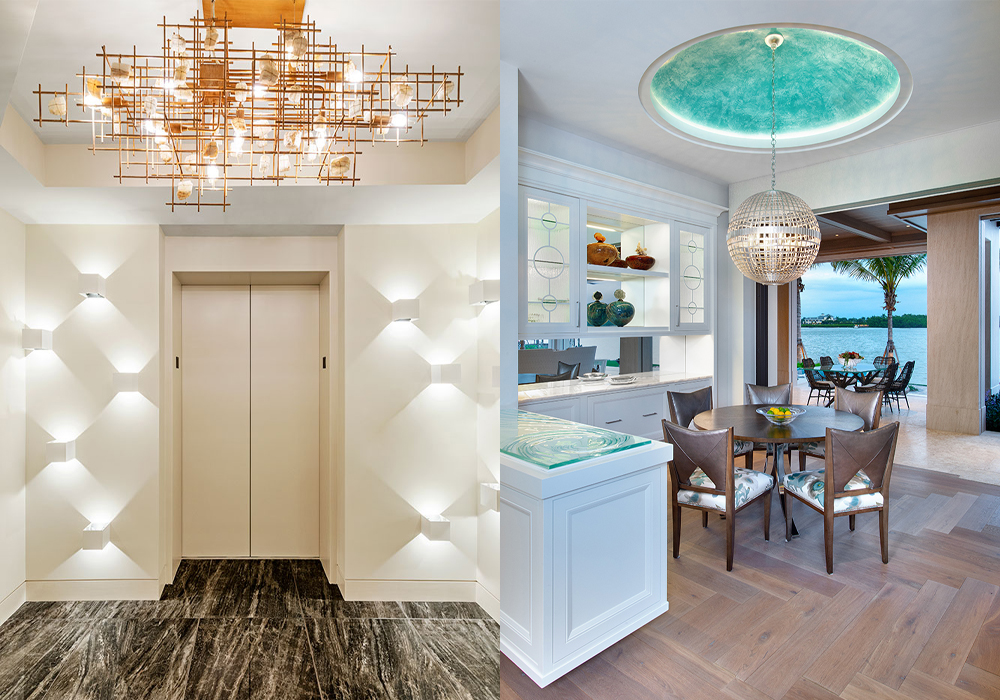
GEORGE: So you went to trade school and then when did you move over to the lighting design side?
LYNNE: After being an electrical rep I went to work for a lighting rep firm. I covered Iowa, Nebraska, Central Missouri and Southern Illinois. I did 60-70,000 miles a year on the road calling on lighting showrooms, electrical distributors, architects, builders and designers. Before deciding to come back home to Florida, I took a job with Kichler Lighting. I was their national trainer for the landscape lighting division for several years.
I then had my own lighting showroom in Southwest Florida until about 2008, during the recession. We were one of the ones that unfortunately didn’t make it. Next was creating the specialty lighting division for a high profile, local lighting showroom. It was right around the time that incandescent was shifting over to LED, and my business partner Curtis Searles, an LED expert, and I were there for about 10 years together. One day about two years ago we decided it was time to branch out, and we launched our own company, Illuminated Design, that today has grown to a multi-million dollar lighting design firm, employing a team of 10.
The technology of lighting is much more complex now than it used to be. We have a driver being made from one manufacturer, chip technology being made from another manufacturer and the fixture itself being assembled from yet another source. Then you have the controls that must be integrated and the dimming that must be perfected.
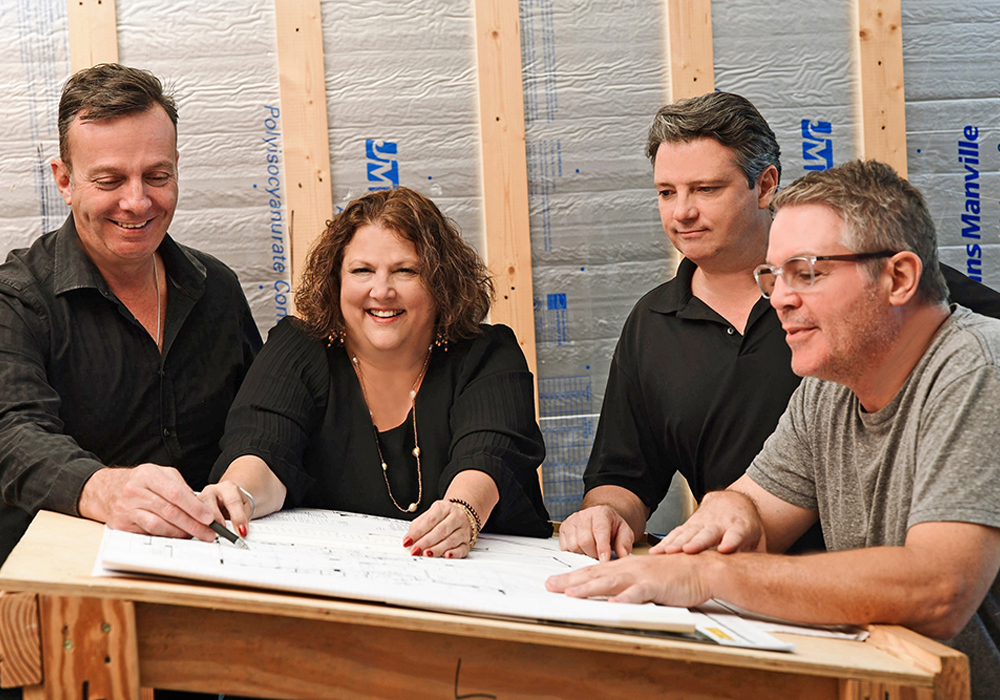
GEORGE: How has the LED technology changed lighting and the way lighting designers approach their projects?
LYNNE: In some very positive ways. Probably the most positive is that things have gotten much smaller with the innovation of LED tape light with really good diffusion. We can do some amazing indirect lighting applications. As a lighting designer, it’s important to create depth in order to create interest. And so the onset of the technology being interfaceable with good dimming control has really given us the opportunity to do some tremendous things.
For instance, we do a lot of backlighting of stone. In the old days, we would build a false back and put fluorescent tubes, tin foil and silver paint to light the stone. Now we have some unbelievable technology with flexible LED that we lay down on a substrate and we are able to actually put the stone right on top of it. We are winning design awards doing that on master bedroom floors, stairwells, countertops, backsplashes, tabletops and bars. That has been something we would never have been able to do without LED.
GEORGE: That leads us to the question of how early in a new home build or remodel should a professional lighting designer be brought in?
LYNNE: As soon as possible. One of the biggest challenges being faced by homeowners today is that there is so much bad LED technology out there. If the product is not specified at the drawing phase, the budget is completely unrealistic. So if a homeowner gets a plan that just has round dots on it, representing recessed cans, then what they’re going to get is probably something from a home store that’s purchased in bulk with a very inexpensive price tag.
But there needs to be a proper budget and design for controls and specialty lighting, which is your in-cabinet or over-cabinet lighting, cove lighting, art lighting — all of those things that make the house really pop. Without them it’s like a layer cake with no frosting — and only one layer. It’s so important for a lighting professional to get in there early so that we can specify the correct product for the correct location and lifestyle of the homeowner. When Illuminated Design is brought in early we create a more realistic budget for the luxury outcome the client undoubtedly wanted. This allows the client and all the design professionals on the project to have realistic expectations, so no one is disappointed and angered at the end of the day.
GEORGE: In terms of lighting control, do you have any particular ones that you like better, or are you kind of agnostic about it?
LYNNE: Lutron on the whole plays very, very well with most of the technology that is coming into the market and gives us the most options when it comes to trying to make all components work seamlessly.
In regard to recessed cans, some of the frustration we have is with manufacturers that have what I call ‘chip on board,’ meaning that it is adhered to the housing itself, which is very difficult to change in the field. That’s why we’re big fans of DMF Lighting. Their modular system is fabulous, where we can put in one recessed can. Then all the trims and modules can be modified in the field if we need to. They also have great color renderings of 95+. It’s a really flexible and affordable product line.
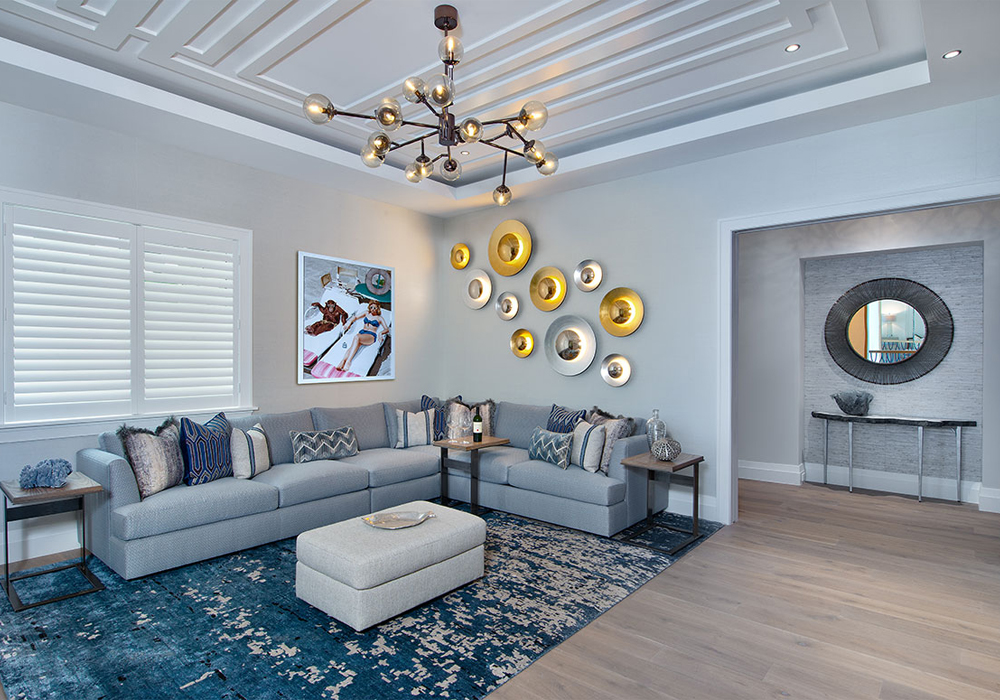
GEORGE: Sometimes even in really nice homes I’ve noticed recessed lighting that seems kind of cool, but then you realize it’s often just lights coming down in places where it doesn’t really make any sense.
LYNNE: As a light lady, it is my legacy to make sure that every light I have specified has a purpose. So we call it the ‘define and defend’ method. Where is the light placement? What is it doing? Why is it existing? How does it work with the other lighting in the space? If there’s a ceiling that’s eight feet versus a ceiling that’s 24 feet, but they’re in the same living space, I want to make sure that I’m selecting a product with consistent color rendering throughout the house. Inconsistency of lighting color in a project is something I see absolutely everywhere. It’s been difficult to control, but it’s much better now. The best advice I can give is to hire a lighting professional early. You can alleviate so much frustration when the lighting is finally all turned on and the project is finished, by making sure upfront that all the chip technology is coming from the same batches, and that they’ve been tested with one another to make sure that they feel right no matter what color rendition you desired.
GEORGE: So, again, bringing the lighting designer in early pays for itself in terms of not having to change things later on. And I know the narrative in terms of lighting control in general is that, yes, this is an expense, but when you can time your lights, when you can create scenes, when you can do all that, you can save money on electricity, etc.
LYNNE: I think that when it comes to lighting and color rendering, it’s probably the most frustrating thing for people because they know the room is wrong, but they don’t know why. And they don’t know how to fix it. What we have found is that our decorative lighting manufacturers will call a color 3,000 Kelvin, but it’s really cool white. And then I can go to another manufacturer who called it 3,000 Kelvin and it’s really warm. So the only thing that we can control as lighting designers is to make sure that the surface is all one color and that the specialty features, your under-, in-, and over-cabinet lighting, the lighting of the art, the work spaces versus the relaxing areas, that everything has to work together from a coloring perspective.
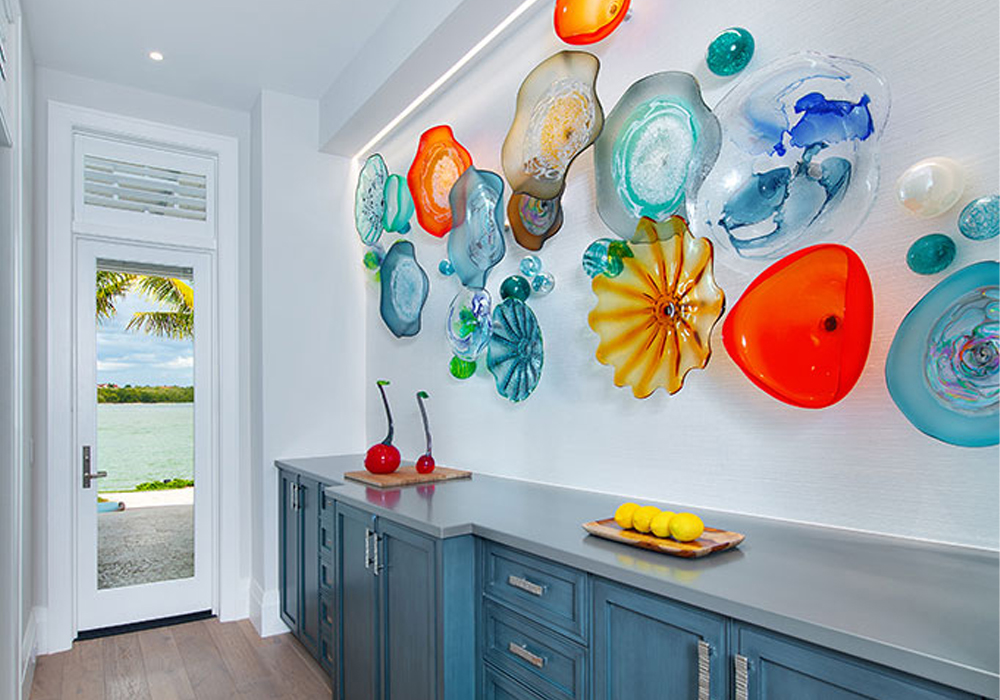
GEORGE: I think that’s a really good point about the specs not always being consistent and that you just have to have the human eye test of what does it really look like.
LYNNE: Yes – or even how about clients that spend hundreds of thousands of dollars in interior design work only to have the floor look different or the paint color be different, or the furnishings or the fabrics look different because they’re not being lit properly?
When you start early in a project, it aligns the interior designer, the builder, the lighting designer, the electrical contractor, the integrator — it brings all of us together. That way we can wrap everybody’s arms around it at the same time and we all know what direction we’re going and what the products are going to look like. And in some cases, my interior designers bring their samples in with their clients and look at it under the light that’s going to be in the house. I mean, that is the absolute perfect scenario. That way the expectations are in check, and everybody knows what it’s going to look like at the end of the day. And no one is mad or disappointed.
GEORGE: How does lighting play into the wellness narrative?
LYNNE: Well, it’s an absolutely fascinating subject, and it’s one about which I spend a lot of time reading. The master clock in the brain coordinates the biological clock in all living things. These clocks are nature’s timing devices, regulating the cycle of circadian rhythms — our body’s natural clock. What sets our natural clock? You would think it was the passage of time, but it’s the color temperature of light! I’ve been reading about studies regarding memory clinics for Alzheimer’s patients. When those patients are under the same color temperature fluorescent lighting all day and night, many suffer from sundowner syndrome.
There are studies being done that if you can change the color to mimic the sun, especially exposure to low level bluish light we experience in the early morning, that resets the biological clock. Equally, higher color temperature light causes our brains to release cortisol which acts to increase alertness and stress, and to control our impulses. Throughout the day, the light gets brighter, but the color temperature steadily decreases to a warmer, less intense light before sunset. This warmer light causes the brain to release melatonin to relax us and prepare our body for sleep. There are some amazing findings about how it is really making a difference in the sundowner syndrome.
There are lighting products that are available residentially that change the color temperature based on the longitude and latitude of the home. Our findings are that it is often cost prohibitive to create this environment on a residential level. We are hopeful that this technology will evolve, so that we can design with it. I look forward to that day, as it really is our future in health and wellness.
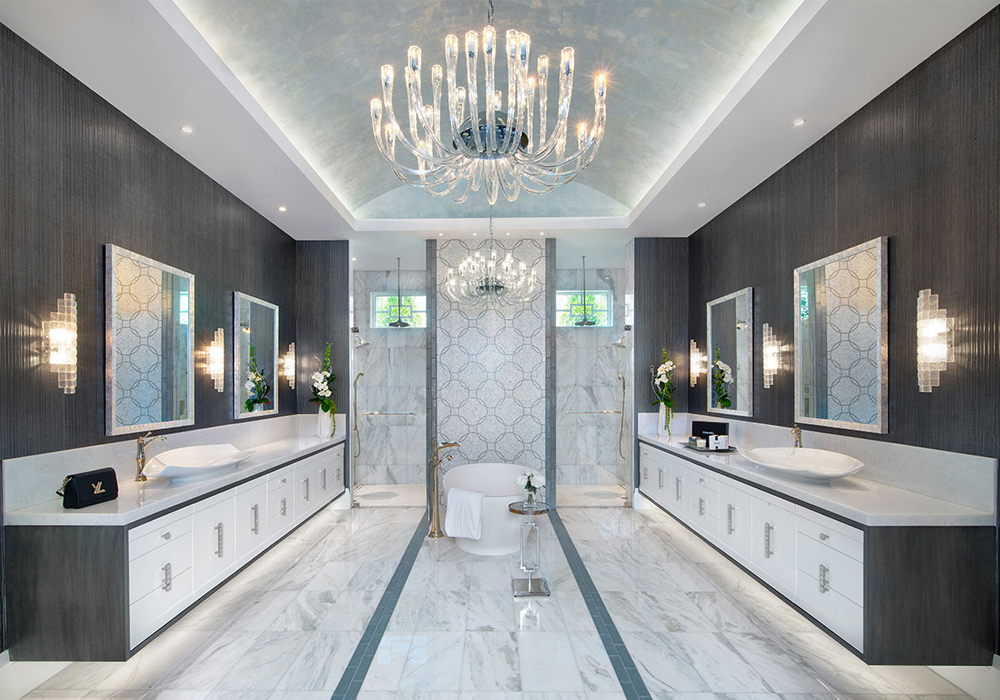
GEORGE: What are the hot trends in lighting and control right now?
LYNNE: The lumen packages are increasing while the apertures are decreasing in size. Today, six-inch recess product is almost non-existent — it’s changed to four-inch, three-inch, two-inch and one-inch product.
I’m also seeing the ability to dim down to one percent, and that is really a wonderful thing. The driver has been the biggest component in regard to trying to dim down the light and with LED it is so different than incandescent. We grew up with bright, less bright, less bright, dim, dim, dim, off. Right? Now with LED, you’ve got bright, less bright, less bright, off. So what’s happened over the last few years is that the driver and controls manufacturers have gotten together and are working so that they can dim those down to one percent without specialty drivers. And if you want to specify a specialty driver, they have what’s called “dim to black” or “dim to dark.” And that will mimic incandescence.
So to me, the big trends are higher lumen packages, smaller apertures and housings and the ability to dim down to that one percent.
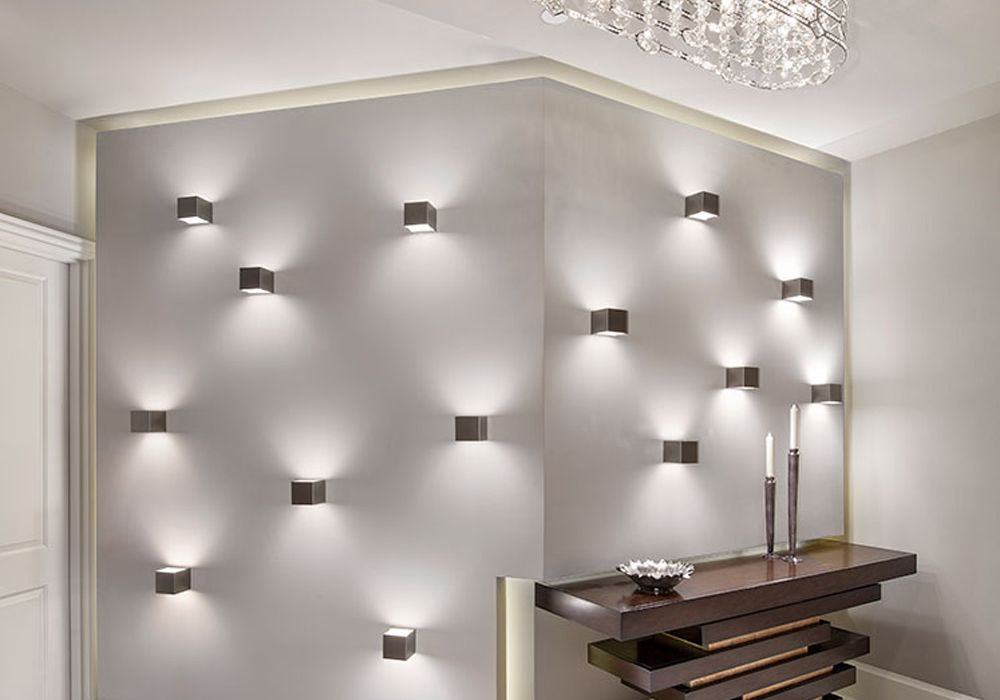
GEORGE: If you can look into your crystal ball, what do you see coming in the future?
LYNNE: Well, I think that we’re at that cusp of really truly understanding chip technology. Look at color rendering index, for example. Color rendering index (CRI) was created on a pastel lighting level for fluorescent. It was never intended for LED. They’re going to have a whole new way to measure color rendering (TM-30) because they are adding primary colors — more red to the mix — it’s making the color of art, furniture, fabrics, flooring and really the entire interior color more vibrant and true. Great color rendering is amazing for all aspects of interior design.
Another cool product is OLED. I saw a demo where they actually added it to glass, and they just put a little bit of voltage to it and the window becomes the illuminator in the room. So when you have LED that can be liquified, you can add it to just about anything and create a luminary. □
View original article at Technology Designer.
————————–
Connect on LinkedIn, Instagram, Facebook, or Twitter to stay up to date with everything that’s happening at DMF Lighting.
